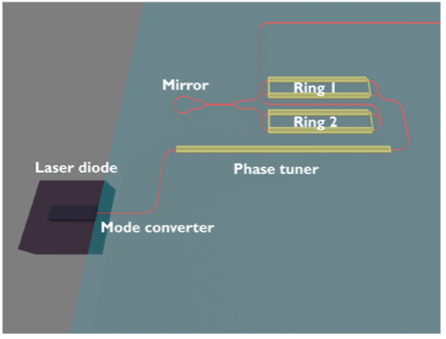Summary
In this project we develop a novel infrared camera with low noise and high detection efficiency for biomedical applications of optical coherence tomography (OCT) using quantum materials. OCT is a technique used to image the back of the eye and allow for the diagnosis of detrimental eye conditions, for e.g., macular degeneration, diabetic retinopathy and glaucoma. It can also be used for early detection of Alzheimer’s disease. However, current OCT systems are limited by their low sensitivity and spatial resolution. To provide more precise early diagnosis of potentially blinding ocular diseases, we utilize the unique expertise of a collaborative team of researchers to develop an infrared camera with sub-micron resolution and single-photon sensitivity: design and nano fabrication of quantum sensors (Reimer), design and fabrication of CMOS electrical read-out circuits to make the camera (Karim and Levine), and extensive knowledge and research expertise in the area of OCT (Bizheva). At the heart of the infrared camera is a single photon detector recently developed through another TQT-supported project, Next Generation Quantum Sensors. This sensor is based on nanostructured arrays of tapered semiconductor nanowires and is capable to detect light with high efficiency, speed, and timing resolution over an unprecedented wavelength range from the UV to infrared, all while operating at room temperature. This sensor will be integrated into a prototype camera and into existing OCT systems to realize enhanced OCT images of the human retina and cornea in-vivo.
Related Content

Micro-Supercapacitors Based on Termination Optimized MXene Quantum Dots with Ultra-High Rate Capability and Fast Frequency Response
Micro-supercapacitors (MCs) are miniaturized energy storage devices that can enhance the performance of wearable health devices, medical implants, wireless sensors, and micro-electromechanical systems due to their fast frequency response, long life cycle, and vast temperature operation. However, to make these MC systems into commercially feasible products, necessary improvements to current MC performance are necessary, primarily […]
June 12, 2023

Entangled Photon Orbital Angular Momentum Arrays
Summary Arrays of orbital angular momentum (OAM) states of light are a new form of structured light so far relatively unexplored in quantum information science. Unlike spin angular momentum of light, which is related to light’s polarization and covers two dimensions, OAM states, sometimes described as ‘donut beams’ due to the shape of the field […]
September 19, 2019

Visible wavelength external cavity diode lasers in photonic integrated circuits for atomic technologies
Atoms can be controlled by manipulating their internal states using agile, quiet and reliable laser sources. An external-cavity diode laser (ECDL) is a crucial enabling technology to realize such laser sources since it allows for the narrowing of the linewidth of a laser diode and precise tuning of the laser frequency. This project aims to […]
April 19, 2023

Topological Properties of Exciton-Polaritons in a Kagome Lattice as a Solid-state Quantum Simulator
Summary In this project, we build a solid-state quantum simulator for engineering a specific Hamiltonian. Quantum simulators are purpose-built devices with little to no need for error correction, thereby making this type of hardware less demanding than universal quantum computers. Our platform consists of exciton-polariton condensates in multiple quantum-wells sandwiched in a semiconductor Bragg […]
December 8, 2018


